Themed collection In honour of Professor Xu Ruren for his forty-year contribution in zeolitic materials research

Ultrafast synthesis of zeolites: breakthrough, progress and perspective
An ultrafast route was established to synthesize industrially important zeolites in several minutes, which represents a breakthrough in the field of zeolite synthesis.
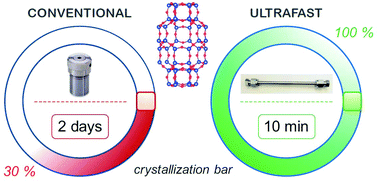
Inorg. Chem. Front., 2019,6, 14-31
https://doi.org/10.1039/C8QI00939B
Transmission electron microscopy as an important tool for characterization of zeolite structures
This review presents various TEM techniques including electron diffraction, high-resolution TEM and scanning TEM imaging, and electron tomography and their applications for structure characterization of zeolite materials.

Inorg. Chem. Front., 2018,5, 2836-2855
https://doi.org/10.1039/C8QI00806J
Utilizing an effective framework to dye energy transfer in a carbazole-based metal–organic framework for high performance white light emission tuning
By introducing dyes into a MOF, a white-light-emitting luminophor was obtained based on effective framework to dye energy transfer mechanism.
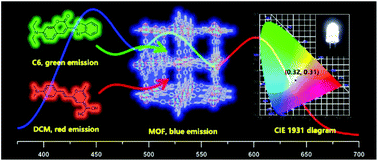
Inorg. Chem. Front., 2018,5, 2868-2874
https://doi.org/10.1039/C8QI00747K
A hierarchical zeolitic Murray material with a mass transfer advantage promotes catalytic efficiency improvement
A rationally designed hierarchical zeolitic Murray material exhibited highly enhanced mass transfer and terrific catalytic activity.
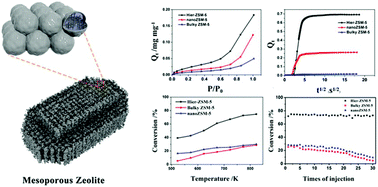
Inorg. Chem. Front., 2018,5, 2829-2835
https://doi.org/10.1039/C8QI00761F
Synthesis and structure of a CDO zeolite precursor with a high Al content
A new high-silica (Si/Al = 8.7) CDO zeolite precursor has been synthesized using tetraethylammonium and tetramethylammonium ions in fluoride media.
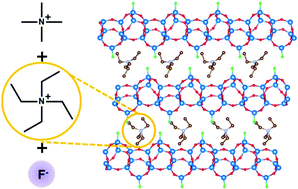
Inorg. Chem. Front., 2018,5, 2792-2797
https://doi.org/10.1039/C8QI00576A
MOF–cation exchange resin composites and their use for water decontamination
Cation exchange resin–ZIF-8 composite beads were prepared and used for the decontamination of water from dye and medical pollutants.
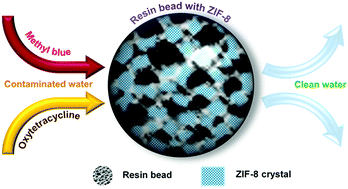
Inorg. Chem. Front., 2018,5, 2784-2791
https://doi.org/10.1039/C8QI00696B
A flexible metal–organic framework with adaptive pores for high column-capacity gas chromatographic separation
A new zinc pyrazolyl-carboxylate framework with multi-mode and adaptive flexibility has been synthesized for efficient gas chromatographic separations.
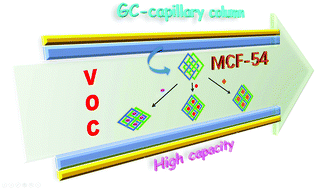
Inorg. Chem. Front., 2018,5, 2777-2783
https://doi.org/10.1039/C8QI00684A
Zeolite framework functionalisation by tuneable incorporation of various metals into the IPC-2 zeolite
The incorporation of metals into the IPC-2 zeolite framework was performed. Synthesised materials were tested in catalysis.
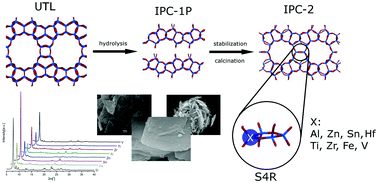
Inorg. Chem. Front., 2018,5, 2746-2755
https://doi.org/10.1039/C8QI00732B
Hydrothermal synthesis of Sn-Beta zeolites in F−-free medium
Sn-Beta zeolites, with high Sn content and smaller crystal size, hydrothermally synthesized in F−-free medium using N-cyclohexyl-N,N-dimethylcyclohexanaminium hydroxide as the structure-directing agent with the assistance of Na+ and seed, are highly active as Lewis acid catalysts.

Inorg. Chem. Front., 2018,5, 2763-2771
https://doi.org/10.1039/C8QI00672E
Morphology control of ZSM-5 zeolites and their application in Cracking reaction of C4 olefin
Different morphologies at different sizes were successfully obtained with thirty five types of additives and evaluated in the cracking reaction of C4 olefin.
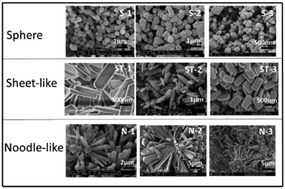
Inorg. Chem. Front., 2018,5, 2734-2738
https://doi.org/10.1039/C8QI00686E
Carbon nanodots in ZIF-8: synthesis, tunable luminescence and temperature sensing
A new hybrid material CNDs@ZIF-8 with tunable luminescence and temperature-responsive photoluminescence has been synthesized by a low temperature-calcination method. An approximate white light has been achieved by combining the blue emission of ZIF-8 framework and the high yellow emission of CNDs.
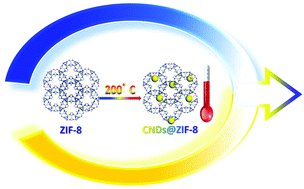
Inorg. Chem. Front., 2018,5, 2739-2745
https://doi.org/10.1039/C8QI00637G
Fluorescent sensors based on AIEgen-functionalised mesoporous silica nanoparticles for the detection of explosives and antibiotics
AIEgen-functionalised mesoporous silica nanoparticles can be used for the detection of explosives and antibiotics based on a FRET mechanism.
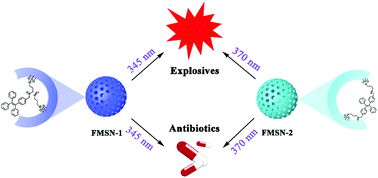
Inorg. Chem. Front., 2018,5, 2183-2188
https://doi.org/10.1039/C8QI00622A
Magnetic mesoporous TiO2 microspheres for sustainable arsenate removal from acidic environments
Unique magnetic mesoporous TiO2 microspheres exhibit superior arsenate removal performance and high stability in acidic environments.
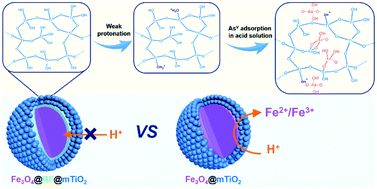
Inorg. Chem. Front., 2018,5, 2132-2139
https://doi.org/10.1039/C8QI00588E
An efficient synthetic route to accelerate zeolite synthesis via radicals
A highly efficient radical-route is developed to accelerate the synthesis of zeolites via sodium persulfate by generating hydroxyl radicals.
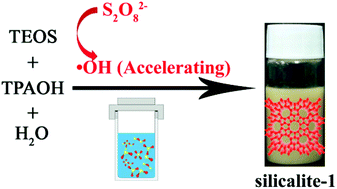
Inorg. Chem. Front., 2018,5, 2106-2110
https://doi.org/10.1039/C8QI00441B
A novel synthetic strategy of Fe-ZSM-35 with pure framework Fe species and its formation mechanism
A novel two-step crystallization process of Fe-ZSM-35 zeolite was designed, and analyzed by UV resonance Raman spectroscopy.

Inorg. Chem. Front., 2018,5, 2031-2037
https://doi.org/10.1039/C8QI00432C
Coordination-supported organic polymers: mesoporous inorganic–organic materials with preferred stability
A simple and versatile strategy is developed for the synthesis of coordination-supported organic polymers(COPs) via coordination between Al3+ and 5-amino-8-hydroxyquinoline together with organic imine- or imide-based polycondensation.
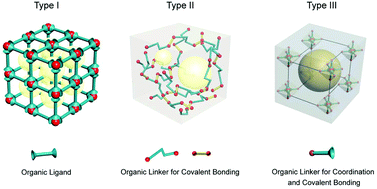
Inorg. Chem. Front., 2018,5, 2018-2022
https://doi.org/10.1039/C8QI00471D
Direct reduction of oxygen gas over dendritic carbons with hierarchical porosity: beyond the diffusion limitation
Direct activation of oxygen gas is achieved over dendritic carbons, resulting in an ultra-high current density without a diffusion plateau.

Inorg. Chem. Front., 2018,5, 2023-2030
https://doi.org/10.1039/C8QI00356D
New insights into the di-n-propylamine (DPA) molecule as an organic structural directing agent (OSDA) in the crystallization of AlPO4-11 molecular sieve
Di-n-propylamine (DPA) molecules induce the transformation from 4/6-MR chains to a 2D layered structure and then to 3D crystals of AlPO4-11 molecular sieves.

Inorg. Chem. Front., 2018,5, 1633-1639
https://doi.org/10.1039/C8QI00346G
Identification of the key factor promoting the enrichment of chiral polymorph A in zeolite beta and the synthesis of chiral polymorph A highly enriched zeolite beta
The acidity of the initial mixture is the key factor promoting the enrichment of chiral polymorph A in zeolite beta.
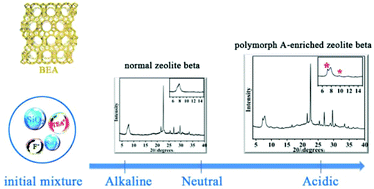
Inorg. Chem. Front., 2018,5, 1640-1645
https://doi.org/10.1039/C8QI00265G
About this collection
Inorganic Chemistry Frontiers is delighted to present this collection of articles dedicated to Professor Xu Ruren for his forty-year contribution in zeolitic materials research.
Professor Xu Ruren, Member of Chinese Academy of Sciences, is an internationally recognized expert in zeolites and related micro/nano-porous materials, making significant contributions in leading the scientific research in China to the advanced world level in those areas. In order to recognize Professor Xu’s contribution, as well as to highlight the rapid developments of nanoporous materials nowadays, this themed collection will aim to showcase the most recent and important research findings in the synthesis, characterization and applications of inorganic nanoporous structures, providing a global vision of the advanced researches from leading scientists.
Guest Editors are Jihong Yu (Jilin University) and Avelino Corma (University of Valencia).
More articles will be added as soon as they are published.